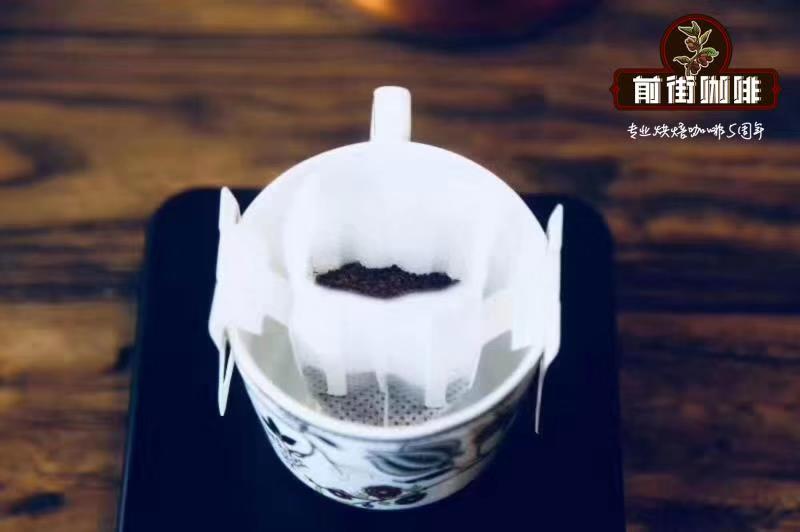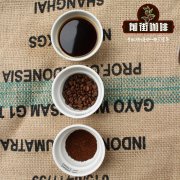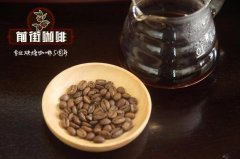Do you know the coffee culture in Norway? what are the flavors of Norwegian coffee beans?

Professional coffee knowledge exchange more coffee bean information please follow the coffee workshop (Wechat official account cafe_style)
You may have heard that Norway ranks second in the world in terms of personal coffee consumption (an average of 9.9 kilograms a year), but Oslo, the capital of Nordic coffee pilgrimage, does not win by quantity.
We can't help but wonder: what is the strength of the coffee culture in Oslo to lead the world trend?
The leader of the third wave of coffee
The first wave of coffee took place in the 1960s, popularizing consumer convenience, and brands such as Maxwell and Nestl é brought instant coffee to home.
In 1971, Starbucks, as a pioneer, led the rise of the chain model, bringing into the second wave of coffee, using the concepts of individual products, origin, and various flavors to market the luxury experience and turn coffee drinking into a social activity.
In 2002, the term "Third Wave Coffee, the third wave of coffee" appeared, which essentially includes boutique, direct trade, continuous operation, shallow baking and innovative brewing methods. Appreciation is the core, and manufacturing and marketing are the background. through the stories and education of professionals (soil, environment, manufacturing process), lovers who are picky about taste buds can understand how special the taste buds are, while roasters and cafes are independent small businesses that attach importance to the community.
Many people ask: is boutique coffee equal to the third wave of coffee? In short, no. The third wave of coffee is an experience economy, supplying boutique coffee. While operators in other cities have just embarked on the third wave, Norwegian coffee culture has long been based on this essence for many years.
In 1998, the president of the first European boutique coffee association (the predecessor of the boutique coffee association) was the Norwegian Alf Kramer, who developed the model and process of the "World Barista Competition".
Founded in 1895, Stockfleth's is a Norwegian coffee giant, nurturing many world-class and national champions. Behind the scenes, it is the largest roaster in Norway, Solberg&Hansen, well versed in seasonality and direct trade, and is proud of its coffee taste for a century.
Norwegian people use language to strongly express that they need coffee every day, saying that they have "Kaffet?rst |-coffee thirst" if they want to drink coffee, while drinking coffee should be lightly roasted.
For 157 years, the taste of Norwegian persistence resonated with the third wave of coffee, forcing those familiar with Italian-style deep-roasted, milky coffee to look back and learn from them. Shallow roasting is suitable for a single variety, which can fully release the fruity and unique flavor of beans, and overbake, but will mask the delicate taste level, enjoy cool pure black coffee, and taste the hidden sweetness best.
Another advantage of this baking method is to identify the defects of raw beans, old beans will have a woody taste, bad beans will be bitter. What remains of countless experiments and years is an accurate recording of the baking curve (roast profile, data on temperature allocation in the process), and it is not too much to say that it is the pedigree of Norwegian baked beans.
Another feature of Norwegian coffee culture is its simple brewing techniques, such as Philharmonic pressure, French filter kettle, pour over, drip, ice drop, etc., which proves once again that consumers prefer the original flavor brewed through hand skills, retaining seasonality, locality and bean personality.
END
Important Notice :
前街咖啡 FrontStreet Coffee has moved to new addredd:
FrontStreet Coffee Address: 315,Donghua East Road,GuangZhou
Tel:020 38364473
- Prev

Do you know what kind of coffee Americans like to drink? explore why Americans don't drink instant coffee?
Professional coffee knowledge exchange more information about coffee beans Please follow the coffee workshop (Wechat official account cafe_style) Coffee culture is a part of daily life in the United States. Americans usually start drinking coffee in the early morning. Most people must have a large cup of coffee for breakfast and a cup of coffee for lunch. In the evening, coffee will be served at the end of the party or
- Next

What is the historical origin of Melita filter cup | brief introduction and understanding of Melita filter cup
Professional coffee knowledge exchange more coffee bean information Please pay attention to the coffee workshop (Wechat official account cafe_style) Coffee is an art of making use of various senses: the temperature of the cup, the aroma, taste, and visual enjoyment of the coffee. Visual enjoyment can be a latte, a way and equipment for making coffee by hand, or the focus of a barista. Compared to the popular espresso (
Related
- Beginners will see the "Coffee pull flower" guide!
- What is the difference between ice blog purified milk and ordinary milk coffee?
- Why is the Philippines the largest producer of crops in Liberia?
- For coffee extraction, should the fine powder be retained?
- How does extracted espresso fill pressed powder? How much strength does it take to press the powder?
- How to make jasmine cold extract coffee? Is the jasmine + latte good?
- Will this little toy really make the coffee taste better? How does Lily Drip affect coffee extraction?
- Will the action of slapping the filter cup also affect coffee extraction?
- What's the difference between powder-to-water ratio and powder-to-liquid ratio?
- What is the Ethiopian local species? What does it have to do with Heirloom native species?

